- Blog
- 15 Shopify Marketing Strategies to Increase Your Store’s Sales in 2025
15 Shopify Marketing Strategies to Increase Your Store’s Sales in 2025
-
Nikolett Lorincz
- Ecommerce
- 6 min read
Table of Contents
When it comes to growing your Shopify store, simply having great products isn’t enough. You’ve got to get the word out, engage your audience, and convert those visits into sales.
But where do you start?
Whether you’re a Shopify newbie or a seasoned pro, navigating the world of marketing can be overwhelming.
That’s why we’ve compiled this list of 15 Shopify marketing strategies to help you get more traffic, engage customers, and increase sales. From SEO to website popups and everything in between, these tactics will give your online store the boost it needs.
Let’s get rolling, shall we?
What is Shopify marketing?
Shopify marketing refers to any activity or marketing strategy used to promote a Shopify store, attract new customers, and retain existing customers.
It encompasses a wide range of techniques including SEO, social media marketing, email marketing strategies, and paid advertising campaigns tailored to your target audience.
The goal? Driving traffic, improving conversions, and getting loyal customers.
How to build an effective Shopify marketing strategy? 15 ideas
Now that you understand the basics, let’s dive into 15 proven Shopify marketing strategies that can help you grow your online store and increase sales.
1. Optimize your Shopify store for SEO
Search engine optimization (SEO) is the key to attracting organic traffic without relying on paid ads. By improving your store’s visibility in search engines, you can rank higher in Google and reach more potential customers.
If Google can’t find you, neither can your target customers!
Start by optimizing your product pages with well-crafted meta descriptions, titles, and relevant keywords. Don’t forget to add alt text to your images to make them more search-friendly.
To streamline your SEO efforts, consider using Shopify apps like Plug in SEO.
2. Build a newsletter list
Building a newsletter list is a crucial long-term marketing asset. A strong email list allows you to stay connected with customers, leading to repeat purchases. Email marketing consistently delivers one of the highest returns on investment.
The easiest way to build your list is by using website popups. Offering incentives like discounts or exclusive content in exchange for sign-ups can dramatically increase the size of your list.
For example, Nexus Sports Nutrition ran a popup campaign promoting a mystery discount and achieved an impressive 11.78% conversion rate.
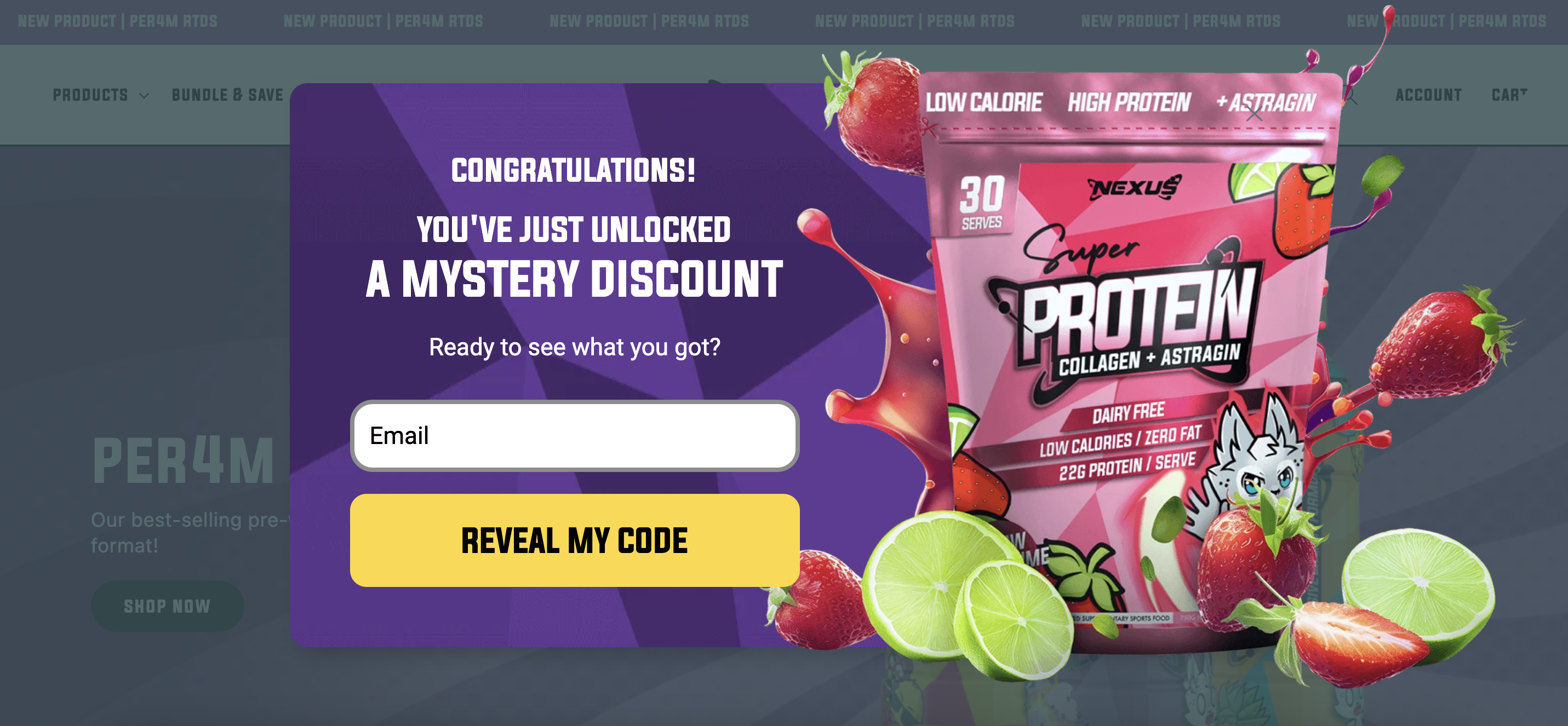
If you’re looking to replicate similar success, here are some popup templates you can try:
3. Leverage email campaigns
Email marketing can be highly effective when it’s personalized. Segmenting your audience based on behavior or preferences allows you to send tailored emails that are more likely to convert.
Popups play a key role in gathering the data you need for this segmentation. For example, Seoulbox used a conversational popup to ask new subscribers about their interests, allowing them to send personalized offers and content based on their responses.
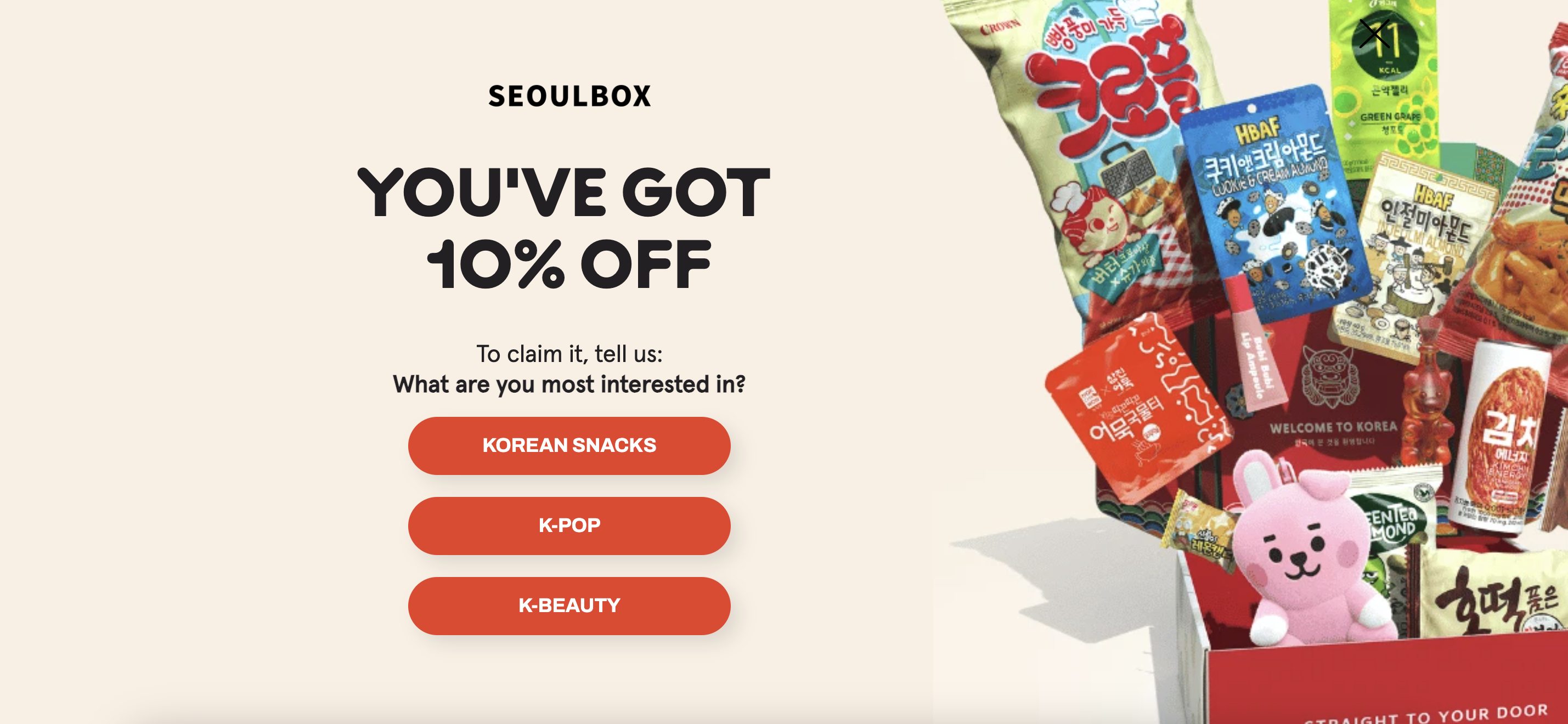
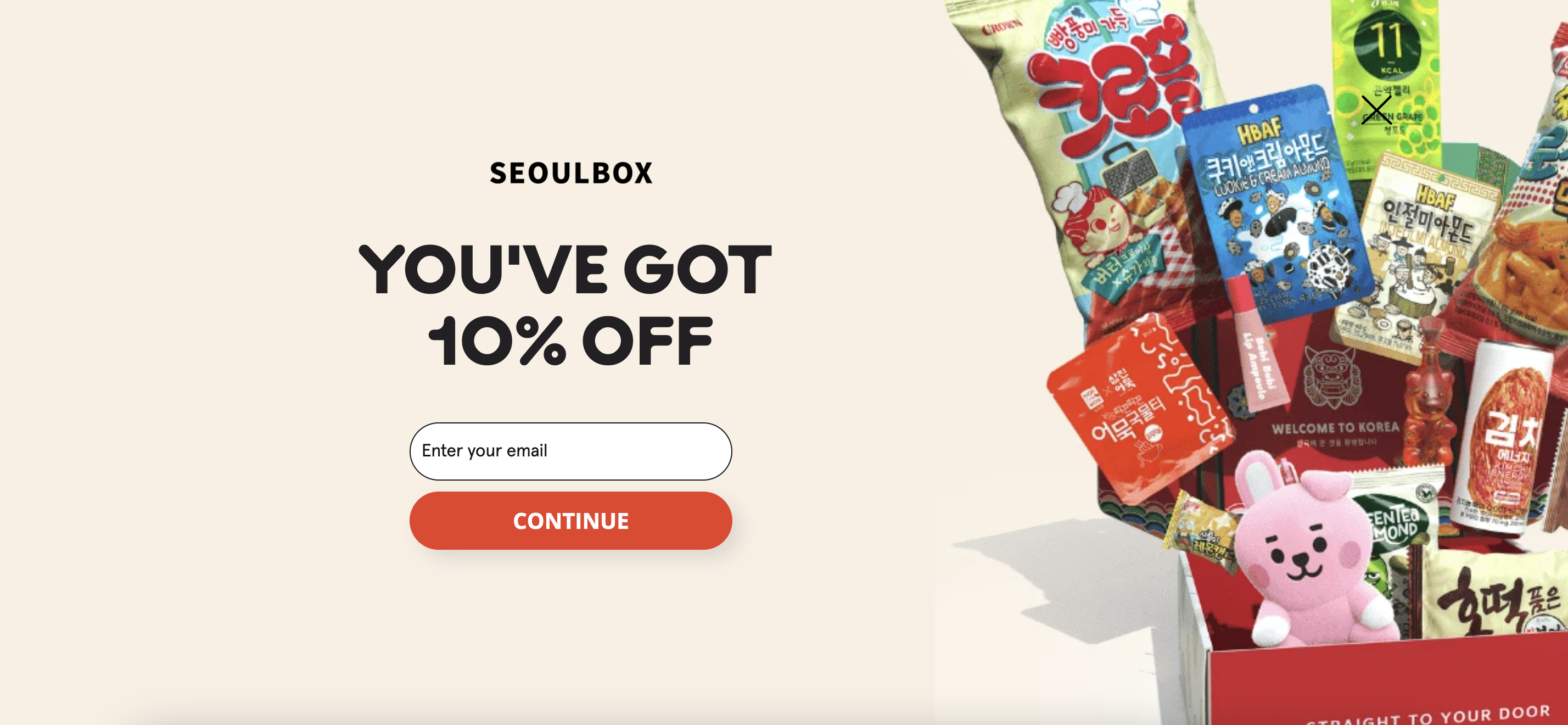
To get similar results, try using these conversational popup templates:
Beyond segmentation, one of the most impactful email strategies is abandoned cart recovery. Setting up automated emails to remind customers of the items they left behind in their carts can bring them back to complete the purchase, significantly boosting your sales.
Tools like Klaviyo or Shopify Email make it easy to automate these processes, helping you send personalized messages at the perfect time and streamline your overall email marketing strategy.
4. Run paid ads
Running paid ads on platforms like Facebook, Instagram, and Pinterest is a great way to generate immediate traffic. The key is to target the right audience.
Using custom audiences and lookalike audiences will help you focus your ads on your target audience, ensuring they reach people most likely to make a purchase.
Always track your performance and optimize your campaigns to get the best return on investment. Facebook Pixel is a powerful tool for understanding what’s working and where you can improve.
5. Build a content marketing strategy
A blog is an excellent way to drive traffic and establish your ecommerce business as an authority. Not only does it boost your SEO, but it also helps educate your customers.
Think of it as your chance to be the helpful expert they never knew they needed.
Create blog posts that provide real value, like how-to guides, tutorials, or stories that showcase your products in action.
Once your blog post is published, promote it through email campaigns and social media platforms to bring more readers (and potential buyers) to your ecommerce site.
6. Utilize influencer marketing
Influencer marketing can instantly give your Shopify store credibility and expose your brand to new audiences.
Find influencers who align with your brand and collaborate with them to create authentic content.
Influencers can also generate user-generated content (UGC) that you can repurpose for your own marketing channels.
To track the effectiveness of your influencer collaborations, provide them with a unique discount code and an affiliate link.
7. Offer limited-time discounts
Creating urgency with limited-time offers is a proven tactic for driving more sales. When customers know an offer won’t last long, they’re more likely to make a purchase right away to avoid missing out.
The fear of missing out (FOMO) is real, folks!
This marketing strategy works particularly well for flash sales, holiday promotions, or seasonal deals.
A great example is Vegetology’s “September Special” popup:
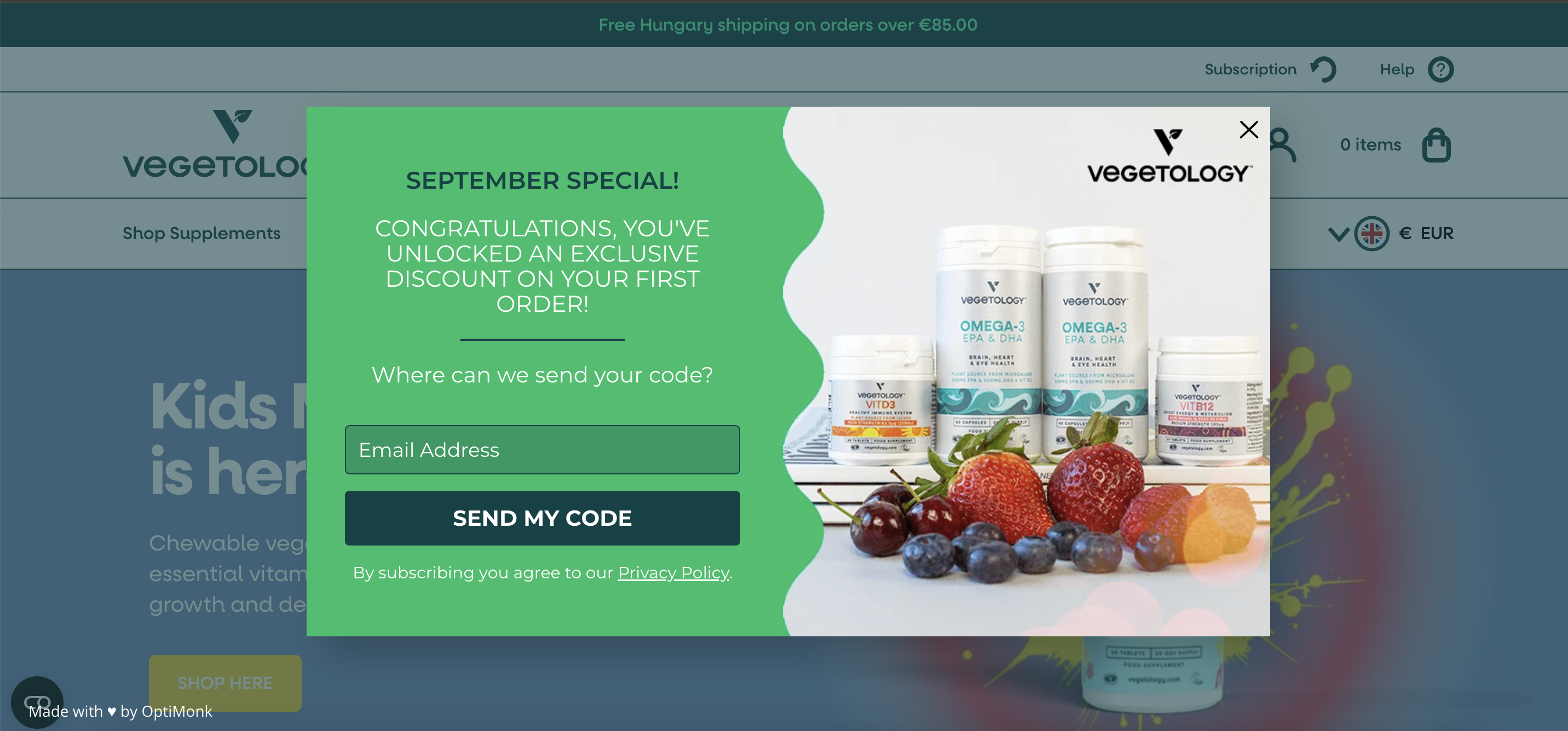
This type of time-sensitive promotion can significantly increase conversions as shoppers feel the pressure to act fast.
To amplify this effect, consider adding countdown timers on your popups. A ticking clock creates a visual reminder of the limited time left, driving customers to make quicker decisions.
8. Implement upselling and cross-selling techniques
Increasing your average order value (AOV) is one of the easiest ways to grow your revenue.
Upselling encourages customers to buy a higher-end version of a product, while cross-selling suggests complementary items.
You can use popups to recommend additional products or upgrades at just the right moment. For example, “frequently bought together” suggestions or “you might also like” popups are simple but effective ways to upsell and cross-sell.
9. Harness the power of retargeting ads
Many visitors won’t make a purchase the first time they visit your Shopify store. Retargeting ads allow you to re-engage these potential customers and bring them back to complete their purchase.
By reminding visitors of products they’ve viewed or added to their cart, retargeting keeps your brand top of mind.
The best platforms for retargeting are Google Ads and Facebook.
Setting up a retargeting campaign is straightforward, and it’s one of the most effective ways to recover lost sales.
10. Use exit-intent popups
Exit-intent popups are designed to appear just as a visitor is about to leave your Shopify website, giving you one last chance to convert them.
These popups can offer discounts, free shipping, or other incentives to encourage shoppers to stay and complete their purchase.
Make sure your popups are well-timed and non-intrusive to create a better user experience and save potential cart abandoners.
11. Promote your free shipping threshold
Offering free shipping can significantly increase your average order value. By setting a free shipping threshold, you encourage customers to spend a little more to qualify.
For example, displaying a message like “Free shipping on orders over $50” can push shoppers to add more items to their cart.
A sticky bar at the top of your site is a great way to keep this offer front and center throughout the shopping experience.
12. Engage with your audience on social media
Building a loyal following on social media by engaging with your target customers can pay off in multiple ways.
Social media platforms like Instagram, TikTok, and Facebook allow you to engage directly with your audience, turning followers into customers.
To foster a strong community, it’s essential to actively engage with your audience. Responding to comments, messages, and mentions shows that you genuinely care about your customers and value their input.
A highly effective strategy for driving engagement is running social media giveaways. These contests not only excite your current followers but also attract new ones.
For instance, Alani Nu frequently runs Instagram giveaways, boosting engagement and growing their audience. By partnering with influencers for these giveaways, they’re able to multiply their reach and tap into new customer segments, all while building a stronger online community.
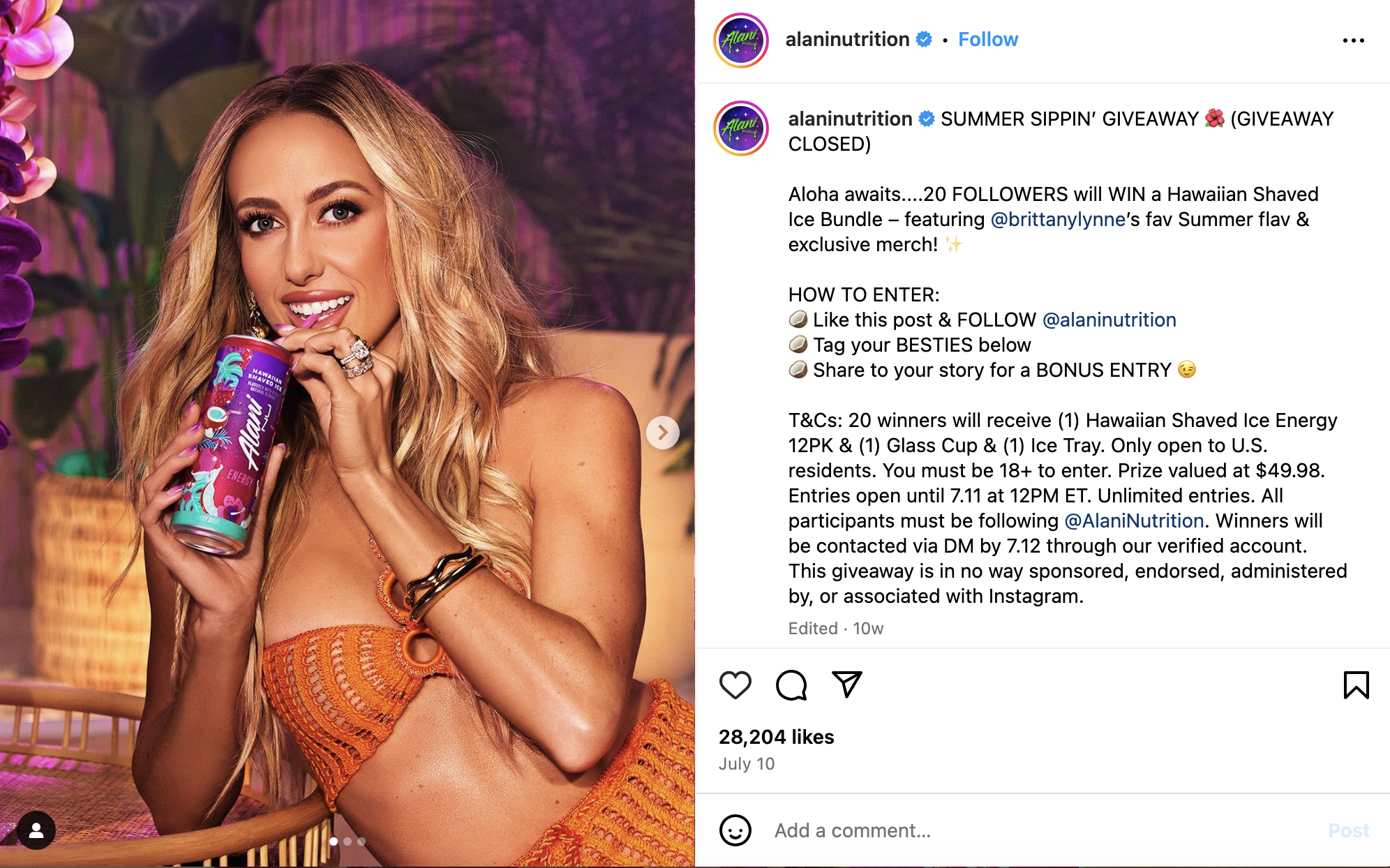
13. Collaborate with other brands
Partnering with complementary brands is a smart way to expand your reach without breaking the bank.
Cross-promotions, joint events, or co-hosted giveaways are popular ways to execute these collaborations. By promoting each other’s products or services, both ecommerce businesses benefit from increased exposure to potential customers who are already interested in their niche.
A perfect example of this is BlendJet and Herbivore Botanicals, who successfully collaborated on a joint giveaway.
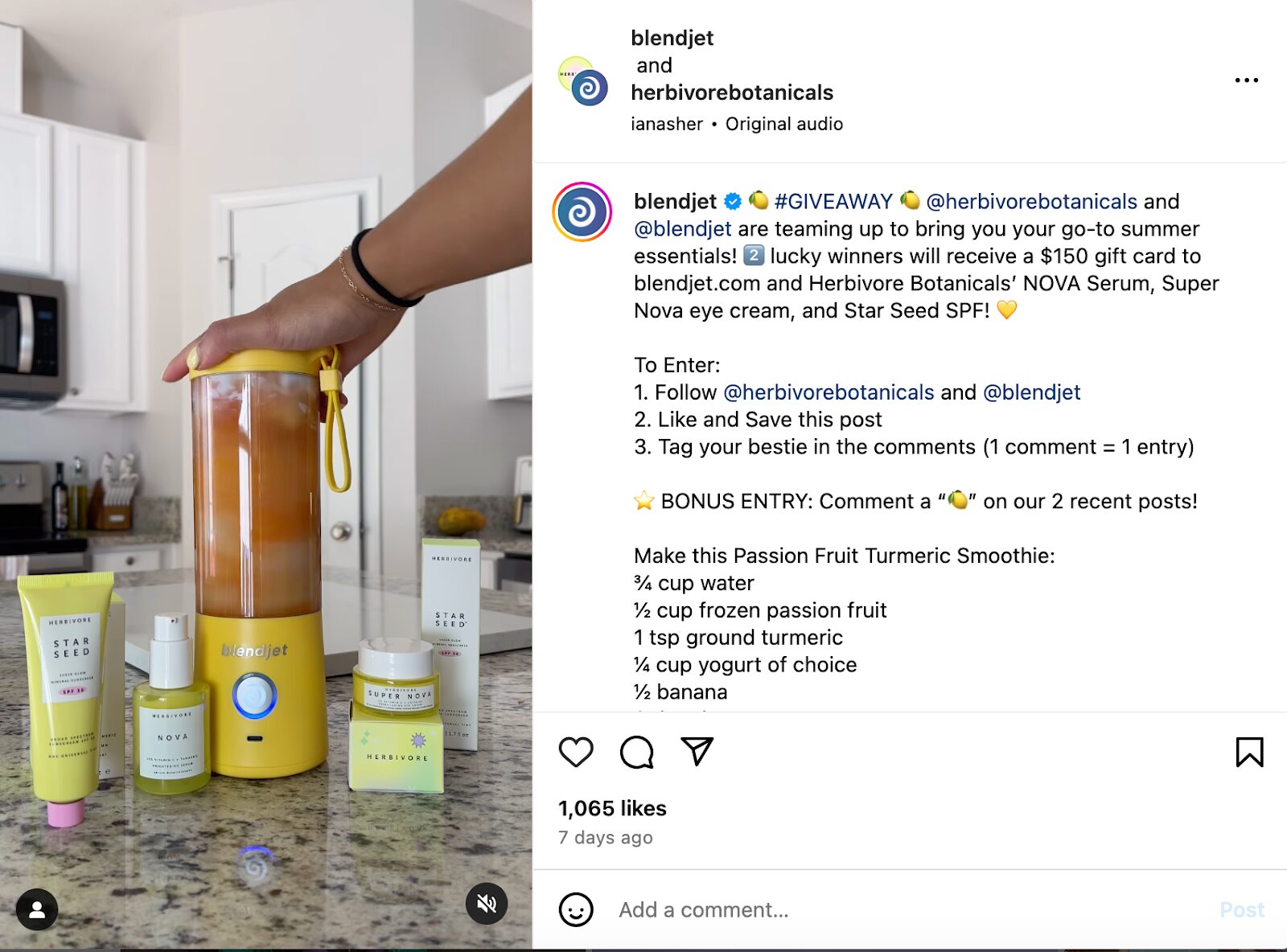
Partnering with the right brands can provide massive exposure and growth for your Shopify store, making it a valuable marketing tactic.
14. Optimize your mobile shopping experience
With more than half of online shoppers browsing on mobile devices, ensuring your store is mobile-optimized is crucial.
A slow, clunky mobile experience can drive customers away, so make sure your site loads quickly and looks great on smaller screens.
Choose a mobile-optimized Shopify theme, and consider apps that improve the mobile shopping experience, like Tapcart.
15. Launch affiliate marketing programs
Affiliate marketing is an excellent way to scale your sales by leveraging others to promote your products. Affiliates earn a commission for each sale they generate, which makes this a low-risk, high-reward strategy.
You can easily set up an affiliate program using Shopify apps like Refersion.
To succeed, focus on finding affiliates who are genuinely passionate about your niche and give them the tools they need to promote your brand effectively.
What are the best Shopify marketing tools?
Shopify store owners need the right tools to manage and scale their marketing efforts.
Fortunately, the Shopify App Store offers a wide range of powerful marketing tools to help you optimize your store, boost traffic, and increase conversions.
Here’s a quick breakdown of the best marketing tools:
- Popup tools: OptiMonk, Justuno
- Email marketing: Klaviyo, Shopify Email
- SEO: Plug in SEO
- Social proof: Loox
- Abandoned cart recovery: OptiMonk, CartHook
Wrapping up
If you’d like to build a powerful Shopify marketing strategy, implement these 15 ideas and take your online store to the next level.
From boosting organic traffic with SEO to nurturing relationships through email marketing and engaging customers via social media, there’s a tactic here for every stage of your customer’s journey.
So roll up your sleeves, dive in, and drive sales for your Shopify store.
Migration has never been easier
We made switching a no-brainer with our free, white-glove onboarding service so you can get started in the blink of an eye.
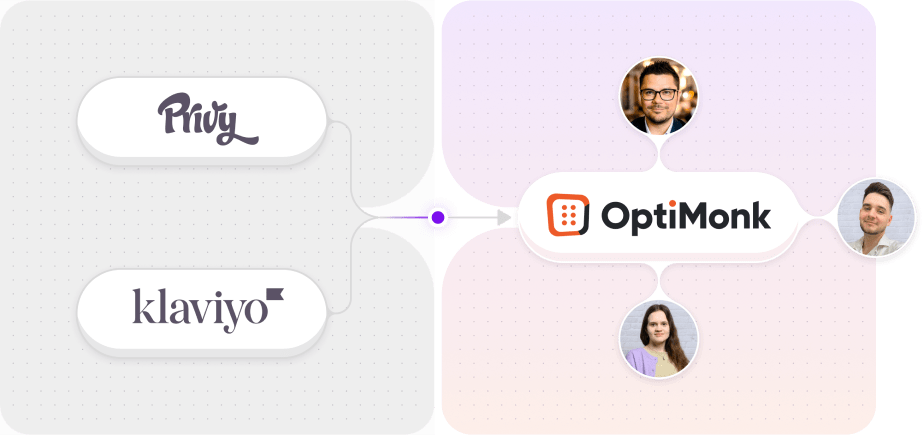
What should you do next?
Thanks for reading till the end. Here are 4 ways we can help you grow your business:
Boost conversions with proven use cases
Explore our Use Case Library, filled with actionable personalization examples and step-by-step guides to unlock your website's full potential. Check out Use Case Library
Create a free OptiMonk account
Create a free OptiMonk account and easily get started with popups and conversion rate optimization. Get OptiMonk free
Get advice from a CRO expert
Schedule a personalized discovery call with one of our experts to explore how OptiMonk can help you grow your business. Book a demo
Join our weekly newsletter
Real CRO insights & marketing tips. No fluff. Straight to your inbox. Subscribe now
Nikolett Lorincz
- Posted in
- Ecommerce
Partner with us
- © OptiMonk. All rights reserved!
- Terms of Use
- Privacy Policy
- Cookie Policy
Product updates: January Release 2025








